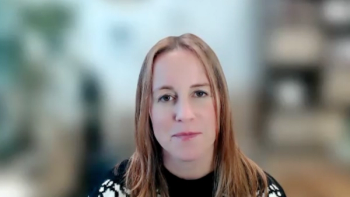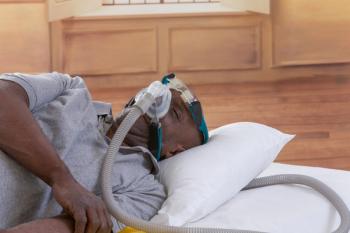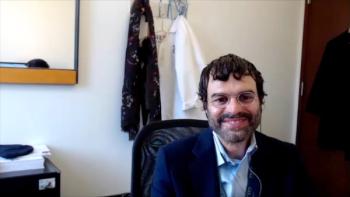
40% of Patients With Heart Failure Don’t See Cardiologist Annually, Increasing Risk of Death
Key Takeaways
- Annual cardiologist visits for heart failure patients can reduce 1-year mortality by 6% to 9%, emphasizing the importance of specialist follow-up.
- The study identified disparities in cardiology care access, with women, elderly, and socioeconomically disadvantaged patients less likely to receive consultations.
Patients who see a cardiologist at least once a year are about 24% less likely to die in the following year.
About 40% of patients with
The nationwide study of more than 655,000 adults showed that a single annual visit to a cardiologist was linked to a 6% to 9% absolute reduction in 1-year mortality, regardless of disease severity. This means 1 life could be saved for every 11 to 16 patients with heart failure who see their cardiologist at least once a year, according to a European Society of Cardiology
Guillaume Baudry, MD, PhD, of the Clinical Investigation Centre at Nancy University Hospital, said while there is no existing cure for heart failure, the right treatment can help control symptoms for years, highlighting the importance of these cardiologist visits.
“At the moment, depending on the patient and their condition, for example whether they have chronic or acute heart failure, they may or may not be seen by a cardiologist,” Baudry explained. “We conducted this study to see whether some simple criteria could be used to divide patients into high or lower risk categories and to assess whether an appointment with a cardiologist is linked with deaths or hospitalisation in heart failure patients at the national level, based on these categories.”
Cardiology Visits During COVID-19
The study population was 48% female with a median age of 80 years, with all patients receiving a heart failure diagnosis between 2015 and 2019.1 Cardiology visits were tracked in 2019 with outcomes measured until December 2022. It’s important to note this coincides with
While the study does not directly mention this as a limitation, COVID-19 restrictions reduced the number of in-person cardiology visits, especially among older or high-risk patients. In the US, the shift to remote care for patients with heart failure led to
“Although there are inherent limitations in observational research, our findings highlight the potential value of specialist follow-up, even in patients who appear clinically stable,” Baudry said.2 “Patients should feel encouraged to ask for a cardiology review, particularly if they have recently been in hospital or they are taking diuretics.”
Up to 40% Mortality Risk With Recent Hospitalizations
Patients were stratified into 4 risk groups based on recent heart failure hospitalization (HFH) and use of loop diuretics.1 The overall all-cause mortality rate was about 16% at 1 year and 27% at 2 years, but ranged widely based on risk.
The 1-year mortality risk ranged from 8% in low-risk patients who weren’t recently hospitalized or on loop diuretics, to 25% in those hospitalized for heart failure within the past year, highlighting the urgent need for targeted outpatient care. At 2 years, all-cause mortality risk increased for all 4 patient subgroups, reaching nearly 40% for patients hospitalized in the past year.
The authors also observed a dose-response relationship between the frequency of cardiology visits and survival outcomes. Among patients with recent HFH, 4 annual cardiology visits were associated with a 38% relative reduction in 1-year mortality compared with no visit, and just 1 visit was linked to a 24% relative reduction.
Despite these clear differences, consultation rates remained flat across risk groups, indicating a misalignment between patient needs and access to specialist care.
“Taken together, these data indicate that cardiology follow-up is conducted without consideration of patients’ baseline risk except for the very initial follow-up after an HFH,” the authors said. “Furthermore, female patients, elderly individuals, and those with a higher disadvantaged socioeconomic index were less likely to receive cardiology consultations, highlighting persistent inequities in access to specialized care.”
References
- Baudry G, Pereira O, Roubille F, et al. Cardiologist follow-up and improved outcomes of heart failure: a French nationwide cohort. Eur Heart J. Published online May 18, 2025. doi:10.1093/eurheartj/ehaf218
- Two out of five patients with heart failure do not see a cardiologist even once a year and these patients are more likely to die. News release. European Society of Cardiology. May 18, 2025. Accessed June 18, 2025. https://www.escardio.org/The-ESC/Press-Office/Press-releases/two-out-of-five-patients-with-heart-failure-do-not-see-a-cardiologist-even-once-a-year-and-these-patients-are-more-likely-to-die
- McCormick B. AJMC studies explore the pandemic's impact on telehealth, care access, and patient experience. AJMC®. March 14, 2025. Accessed June 18, 2025. https://www.ajmc.com/view/ajmc-studies-explore-the-pandemic-s-impact-on-telehealth-care-access-and-patient-experience
- Yuan N, Botting PG, Elad Y, et al. Practice patterns and patient outcomes after widespread adoption of remote heart failure care. Circ Heart Fail. 2021;14(10):e008573. doi:10.1161/CIRCHEARTFAILURE.121.008573
Newsletter
Stay ahead of policy, cost, and value—subscribe to AJMC for expert insights at the intersection of clinical care and health economics.













































